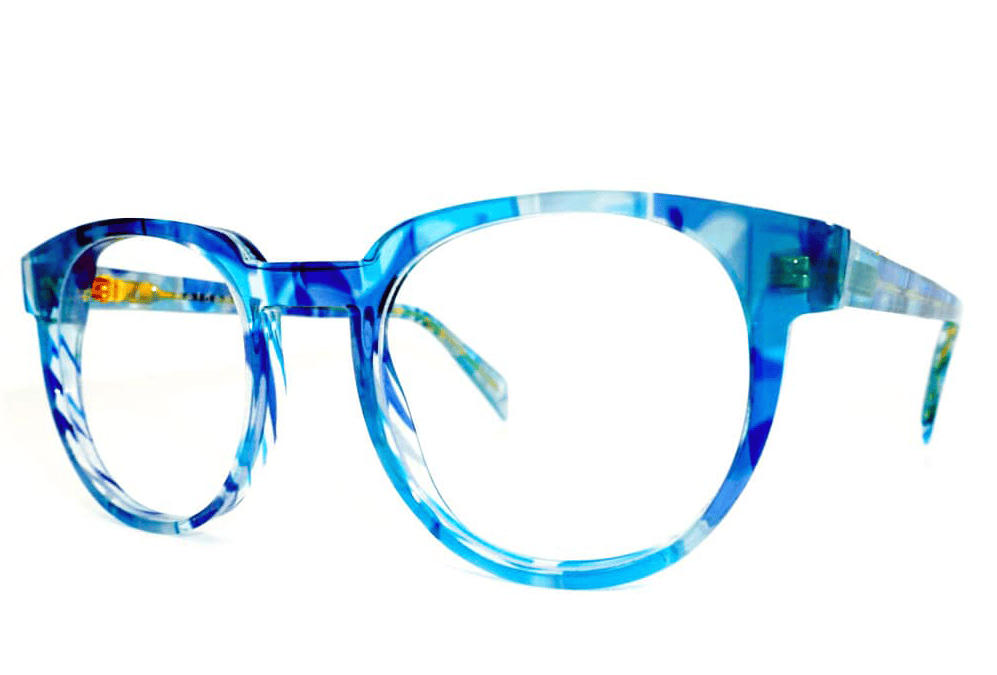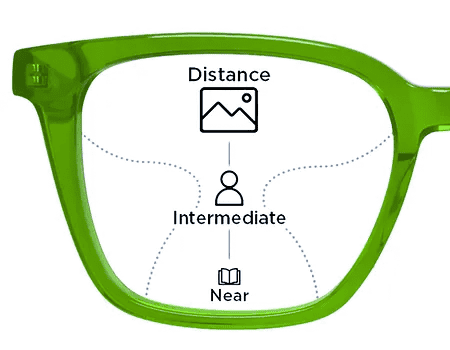Who Should Wear Progressive Lenses?
Progressive lenses are ideal for people with presbyopia, a natural aging condition where the eye’s lens loses its ability to focus on close objects. This condition typically begins in people in their early 40s, and it gradually worsens over time.
People who have worn single-vision glasses for many years often benefit from the switch to progressive lenses once they start experiencing trouble seeing both near and far. The lenses are suitable for those who want a more modern alternative to bifocals or trifocals and prefer the convenience of having one pair of glasses for all distances.
Are Progressive Lenses Hard to Get Used To?
Adjusting to progressive lenses can take some time, especially for those who have never worn multifocal lenses before. Because the power of the lenses changes gradually from top to bottom, it can initially feel different or weird when looking through various parts of the lens.
During the adjustment period, it’s important to point your nose directly toward what you want to focus on, rather than just moving your eyes. This helps you look through the correct part of the lens for the task you’re doing. Most people adapt to the new lenses within a few days or weeks. If you’ve just gotten your first pair of glasses with progressive lenses, read about how you can adapt to your new progressive lenses.
What Are the Advantages of Progressive Lenses?
One of the main advantages of progressive lenses is the ability to see at multiple distances without needing to switch between different pairs of glasses. Whether you’re reading a book, working at a computer, or driving, progressive lenses allow you to focus on objects at varying distances with ease.
Progressive lenses are also aesthetically pleasing, as they don’t have the visible lines that bifocals or trifocals have. The smooth design allows for a more youthful appearance, which is why many people prefer them over traditional multifocal lenses.
Are There Any Disadvantages to Progressive Lenses?
While progressive lenses offer many benefits, there are some potential challenges. The most common issue is the time it takes to adjust to the lenses. For some people, this adjustment can take longer than a few weeks. Another consideration is that the peripheral areas of the lens may have some distortion, which can cause slight blurriness or a “swim” effect. This occurs because the lenses must accommodate multiple focal lengths. However, newer lens designs often minimize this distortion, making it less noticeable for most wearers.
What Should I Know When Choosing Progressive Lenses?
Before you order progressive lenses, make sure you have an accurate PD measurement. This is essential, otherwise the lenses will be missaligned with your eyes and can be extremely difficult to use. Once you have an accurate PD, you’ll want to select frames that match this PD, having frames that are too small or too big can impact lens thickness and comfort. It’s important to visit an optician and update your prescription, PD and maybe even your glasses before getting your first progressive lenses.
Something else to know is that the quality of the lenses can vary depending on the design, so it’s important to select lenses that are well-suited to your lifestyle and needs. Consider how much time you spend on different activities, such as reading, working on a computer, or driving. Some progressive lenses are optimized for specific tasks, so discussing your lifestyle with your eye care professional can help you choose the best option.




